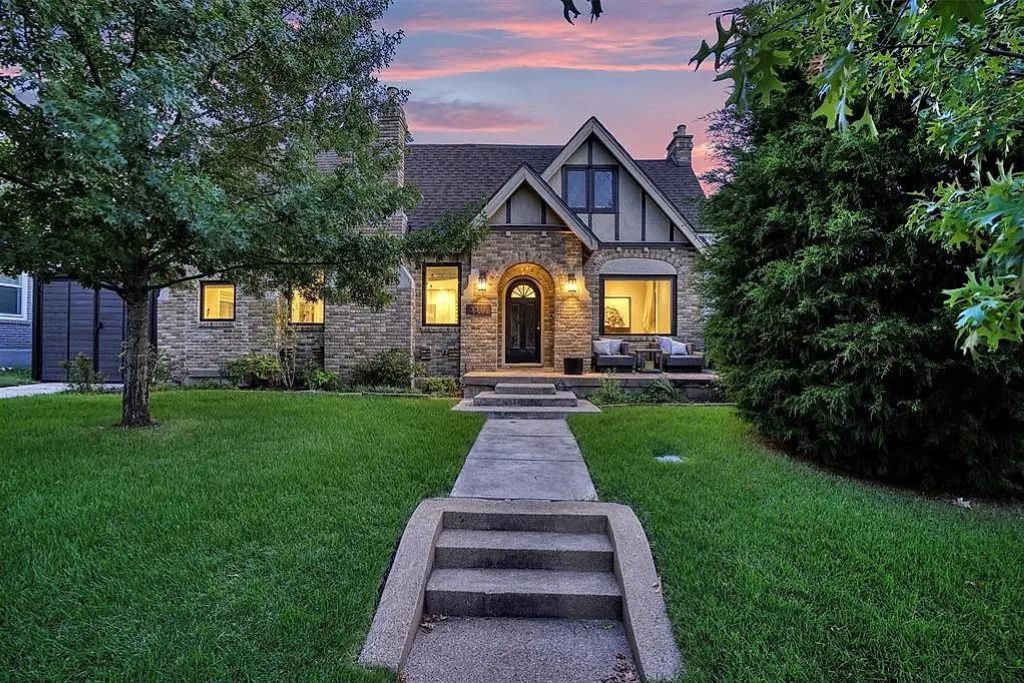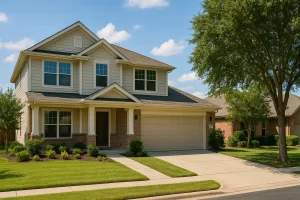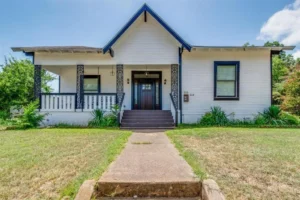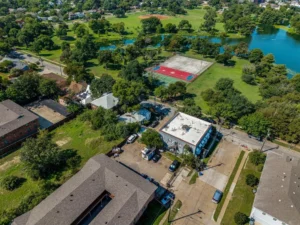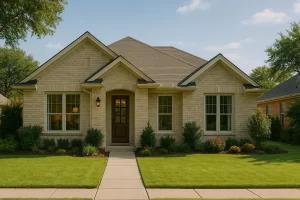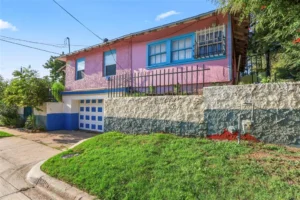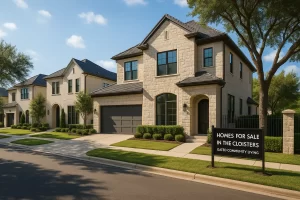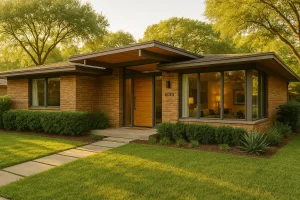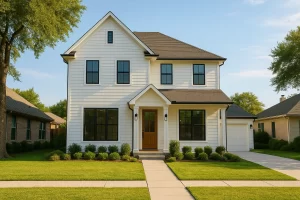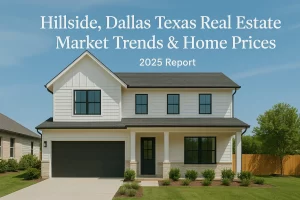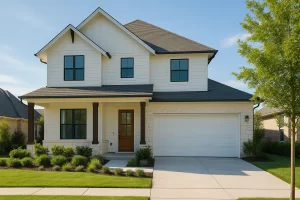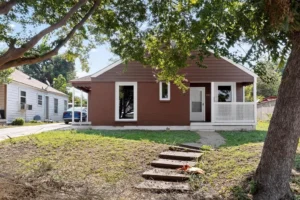Dallas Job Market and Economic Landscape
Dallas has a diverse and thriving job market. It offers opportunities in technology, healthcare, finance, and energy. The energy sector is particularly strong. Companies like ExxonMobil and Pioneer Natural Resources are major employers. They help Dallas lead in the energy industry.
The city’s finance industry is also growing. Many banks and investment firms are based here. This creates jobs for finance professionals and boosts the economy. The technology sector in Dallas is expanding too. Innovative startups and big tech firms attract skilled workers.
These industries together make Dallas’s job market vibrant. The city is great for those looking for varied career options. Its strong job economy and growing population offer wide career prospects. Dallas is thus a top destination for job seekers.
Affordability and Cost of Living in Dallas
In addition to the median housing price of around $380,000, the overall cost of living in Dallas is further complemented by the absence of state income tax, which is a significant financial advantage for residents.[2]. This tax benefit can lead to considerable savings for individuals and households, enhancing the affordability of living in Dallas. Furthermore, the lower cost of living in Dallas compared to other major cities allows residents to allocate their resources more flexibly, whether it’s for leisure activities, education, or savings for the future.
Young professionals and households find Dallas economically attractive. It’s ideal for those seeking a cost-effective environment for their goals. Dallas’s affordability makes it a great choice for setting roots in a dynamic city.
Additionally, Dallas offers diverse housing options. This includes affordable homes in the city and suburbs. Furnished apartments like those from Landing cater to those wanting stress-free living. These housing options add to Dallas’s appeal as an inclusive city for all lifestyles.
Climate, Outdoor Activities, and Green Spaces
Dallas boasts a warm and sunny climate, ideal for year-round outdoor activities. With an average of 234 sunny days per year, residents can enjoy the city’s extensive park system, preserves, and green spaces in a variety of weather conditions. For example, the White Rock Lake, spanning over 1,015 acres, not only offers picturesque views but also provides opportunities for hiking, cycling, and water activities, attracting nature enthusiasts and fitness enthusiasts alike.
The city’s climate and outdoor amenities contribute to a vibrant and active lifestyle for residents, promoting physical and mental well-being. Additionally, Dallas hosts numerous outdoor events and festivals throughout the year, taking advantage of the favorable weather. For example, the annual “Dallas Blooms” festival at the Dallas Arboretum and Botanical Garden showcases over 500,000 spring-blooming bulbs, creating a stunning display of colors and fragrances, drawing visitors and locals to experience the beauty of the outdoors. These offerings not only contribute to the city’s cultural vibrancy but also foster a sense of community and connection among its residents.
Moreover, Dallas’s warm and sunny climate also plays a significant role in enhancing the city’s appeal for outdoor enthusiasts and individuals seeking an active lifestyle. The availability of green spaces and favorable weather conditions provides ample opportunities for residents to engage in various outdoor activities, contributing to their overall well-being and quality of life.
Arts, Entertainment, and Cultural Scene
Dallas boasts a vibrant arts and cultural scene. The AT&T Performing Arts Center offers world-class performances. This includes theater, dance, and concerts. The Dallas Museum of Art showcases a vast collection. It features art from various cultures and eras.
The city’s culinary scene is diverse. Dining options range from upscale restaurants to food trucks. Dallas’s food scene reflects its cultural diversity. It offers a gastronomic journey for all tastes. This rich cultural life makes Dallas dynamic and engaging.
Dallas also has a lively music scene. Various venues host a range of musical styles. From indie bands to famous artists, there’s something for everyone. The city’s commitment to arts and culture enhances its appeal. It’s a vibrant place to live and experience creativity.
Transportation Challenges and Commuting When Living in Dallas
The transportation challenges in Dallas can be a significant drawback for residents. The city’s expansion and population growth have led to frustrating traffic and long commuting times, impacting the daily lives of many individuals [2]. For example, commuting from the suburbs to the city center during peak hours can often result in substantial delays, affecting the work-life balance of commuters.
Moreover, the limited and less reliable public transportation options contribute to the dependence on cars for daily commuting. Unlike some other major cities with comprehensive subway or light rail systems, Dallas relies heavily on personal vehicles, which can lead to increased congestion and longer commute times. For instance, individuals who rely on public transit may face challenges in accessing certain areas of the city, affecting their mobility and overall convenience.
These transportation challenges and commuting issues are essential considerations for individuals contemplating a move to Dallas. The impact of traffic and limited public transportation on daily life should be carefully evaluated when weighing the pros and cons of living in the city [2].
Furthermore, the city’s transportation infrastructure is undergoing significant developments, with ongoing initiatives to improve public transit and alleviate traffic congestion. For instance, the Dallas Area Rapid Transit (DART) system continues to expand its network, providing residents with more accessible and efficient transportation options. These developments underscore the city’s commitment to addressing transportation challenges and enhancing the overall mobility experience for its residents.
Weather Extremes and Environmental Risks
In addition to the scorching summer temperatures, Dallas is also susceptible to severe thunderstorms with high winds and hail, which can lead to property damage and power outages. These weather conditions can disrupt daily routines and necessitate preparedness to ensure safety and security.
For example, the city experienced a series of destructive tornadoes in recent years, causing significant damage to homes and infrastructure. This underscores the importance of having a comprehensive emergency plan in place to protect oneself and loved ones during extreme weather events. Moreover, the region’s vulnerability to flooding during heavy rainfall adds another layer of environmental risk to consider. It’s crucial for residents to factor in the potential impact of weather-related disruptions on their daily lives and take appropriate precautions to safeguard their well-being and property.
Furthermore, Dallas’s susceptibility to extreme weather conditions has prompted the implementation of robust emergency response and preparedness measures. The city’s emergency management agencies and community organizations work collaboratively to educate and empower residents to mitigate the impact of severe weather events. Additionally, advancements in weather forecasting and early warning systems have enhanced the city’s capability to alert and protect its residents, underscoring its commitment to ensuring a safe and resilient living environment.
Urban Infrastructure and Walkability Concerns
In addition to its urban sprawl, Dallas also faces challenges in providing a compact, walkable urban core, which has implications for accessibility and community connectivity. Unlike some other major cities that boast pedestrian-oriented neighborhoods and a well-connected urban landscape, Dallas has a sprawling layout that relies heavily on cars for transportation. This setup affects the walkability and connectivity within neighborhoods and can significantly influence lifestyle choices and residential preferences.
For example, the lack of a compact urban core can mean that residents may have to travel longer distances to access essential amenities such as grocery stores, schools, and healthcare facilities. This can lead to a greater reliance on personal vehicles and longer commute times, impacting the overall quality of life for individuals and households. Additionally, the absence of a walkable urban core may limit the opportunities for spontaneous social interactions and community engagement, as residents may be less likely to walk or bike to nearby destinations due to the city’s layout.
These urban infrastructure and walkability challenges underscore the importance of considering one’s mobility preferences and daily needs when contemplating living in Dallas. While the city offers diverse neighborhoods and housing options, the urban layout and transportation dynamics should be factored into the decision-making process for prospective residents [3].
Moreover, Dallas is actively focusing on urban planning and infrastructure development to enhance walkability and connectivity within the city. Initiatives such as the construction of pedestrian-oriented pathways, bike lanes, and mixed-use developments aim to create a more accessible and interconnected urban environment. These efforts reflect the city’s commitment to fostering a livable and sustainable urban landscape, addressing the challenges associated with urban sprawl and promoting community well-being.
Housing Diversity and Affordability
Dallas’s housing market offers many options. The median house price is about $380,000. This makes Dallas attractive for affordable housing. The suburbs also provide varied choices. These include single-unit homes, townhouses, and condos. They cater to different lifestyles and amenities.
Uptown and Oak Lawn are good examples of housing diversity. They have urban condos, townhomes, and historic homes. This variety caters to urban living preferences. Furnished apartments, like those from Landing, offer flexibility. They’re ideal for those who value convenience.
Dallas’s diverse housing options meet various preferences. This variety makes the city inclusive and accessible. It appeals to people from all backgrounds. Housing diversity makes Dallas an attractive place to live. It suits many needs and lifestyles, enhancing the city’s livability.
The diverse range of housing options in Dallas not only allows residents to find homes that suit their preferences but also contributes to the city’s overall appeal as an inclusive and accessible place for individuals from various walks of life. This housing diversity enhances the city’s reputation as an attractive residential destination, accommodating a wide range of needs and lifestyles, and contributing to the overall livability of Dallas.
Moreover, Dallas’s housing market is characterized by its resilience and adaptability, with ongoing developments and investments in affordable housing initiatives. The city’s commitment to addressing housing affordability and diversity reflects its dedication to creating inclusive and vibrant communities for residents from diverse socioeconomic backgrounds.
Community Atmosphere and Social Dynamics
Dallas is known for its warm, welcoming residents. They showcase Texas pride and create a welcoming atmosphere. Hospitality is key, building a strong community across the city. The Texas State Fair is a great example. It unites locals and visitors, reflecting Dallas’s inclusive social scene.
Moreover, the city’s growing population and increasing diversity shape the social dynamics and overall community atmosphere in Dallas. As new residents from various backgrounds and cultures integrate into the city, they bring a wealth of ideas, traditions, and experiences, creating a melting pot of perspectives. This inclusive and diverse environment fosters a sense of belonging and community engagement, enriching the social fabric of the city. For example, events such as the Dallas International Festival celebrate the city’s multiculturalism, offering residents and visitors an opportunity to engage with different cultures and traditions, further enhancing the social dynamics in Dallas.
Dallas also has a collaborative and civic-minded community. People participate in local initiatives and associations. This active involvement strengthens the city’s sense of community. It shows Dallas’s commitment to a supportive and inclusive environment. This approach helps to create a thriving urban community.
Comprehensive Overview and Considerations
Dallas is an economic hub attracting job seekers. Its job market is diverse, offering roles in technology, healthcare, finance, and energy. Major companies like AT&T and Texas Instruments are based here. They offer various job opportunities. Dallas’s robust job market and growing population provide many career options.
The cost of living in Dallas is relatively low, especially compared to other major cities. The median house price is around $380,000. This makes homeownership more accessible. There’s no state income tax, adding to the city’s affordability. Residents enjoy a comfortable standard of living without heavy financial burdens.
Prospective residents should consider Dallas’s pros and cons. The city offers culture, community, and economic opportunities. Challenges include transportation, weather, and urban infrastructure. Careful research is essential for informed decisions about living in Dallas.
Dallas’s dynamic and diverse neighborhoods. From Deep Ellum vibrancy to Plano’s welcoming vibe, there’s something for everyone. The city’s residential landscape caters to various lifestyles and preferences.
Dallas is also committed to sustainable development. Efforts include enhancing green spaces and promoting energy efficiency. This commitment underlines the city’s vision for a high quality of life.
In conclusion, Dallas offers a balanced living experience. It has economic vitality, cultural richness, and varied living options. While facing challenges in transportation and weather, its positives like a welcoming community and affordability stand out. Choosing Dallas involves weighing personal preferences to make the right decision.


